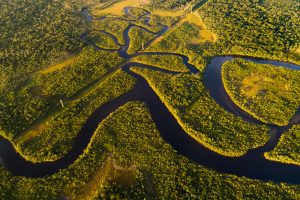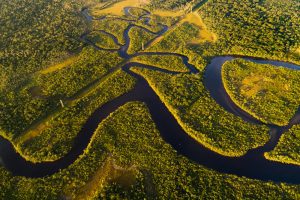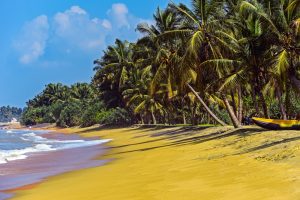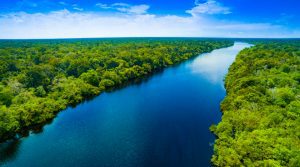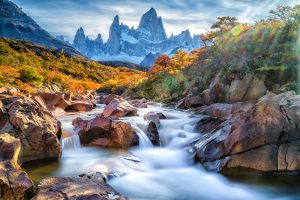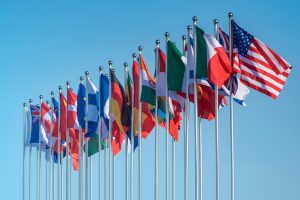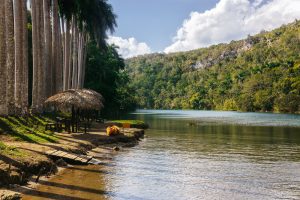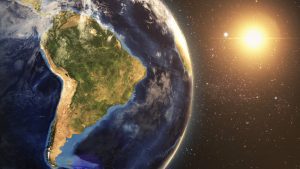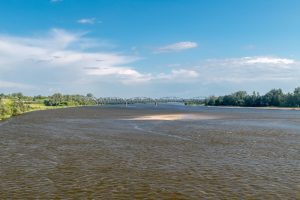Home to the famous Amazon River, the world’s largest rainforests, and the greatest biodiversity, South America is the fourth largest continent in the world with a total area of 17,732,346 sq km.
Moreover, it is the fifth continent with the largest population – 434,254,119 people. Approximately 47% of the total area is covered with forests, which is estimated to be about 831,540,000 hectares.
The continent comprises 12 independent countries: Argentina, Bolivia, Brazil, Chile, Colombia, Ecuador, Guyana, Paraguay, Peru, Suriname, Uruguay, and Venezuela.
Of the 12 South American countries, Brazil is the largest by area with a total of 8,515,770 sq km.
The second-largest country is Argentina with 2,780,400 sq km and the third largest is Peru 1,285,216 sq km.
Table of Contents
1. Brazil – 8,515,770 Square Kilometers

The largest country by area in South America is Brazil with a total area of 8,515,770 sq km. It also has the largest population on the continent with 214,047,375 people, ranking it the seventh largest in the world.
Sao Paulo is the country’s largest city by population and area, with a population of 12,400,232 and a total area of 1,521 sq km.
The city is popular for its tall skyscrapers and modern architecture. Following Sao Paulo is another famous city, Rio de Janeiro, with an area of 1,260 sq km. It is a popular tourist destination known for its scenic landscape views and Christ the Redeemer, one of the seven wonders of the world.
2. Argentina – 2,780,400 Square Kilometers
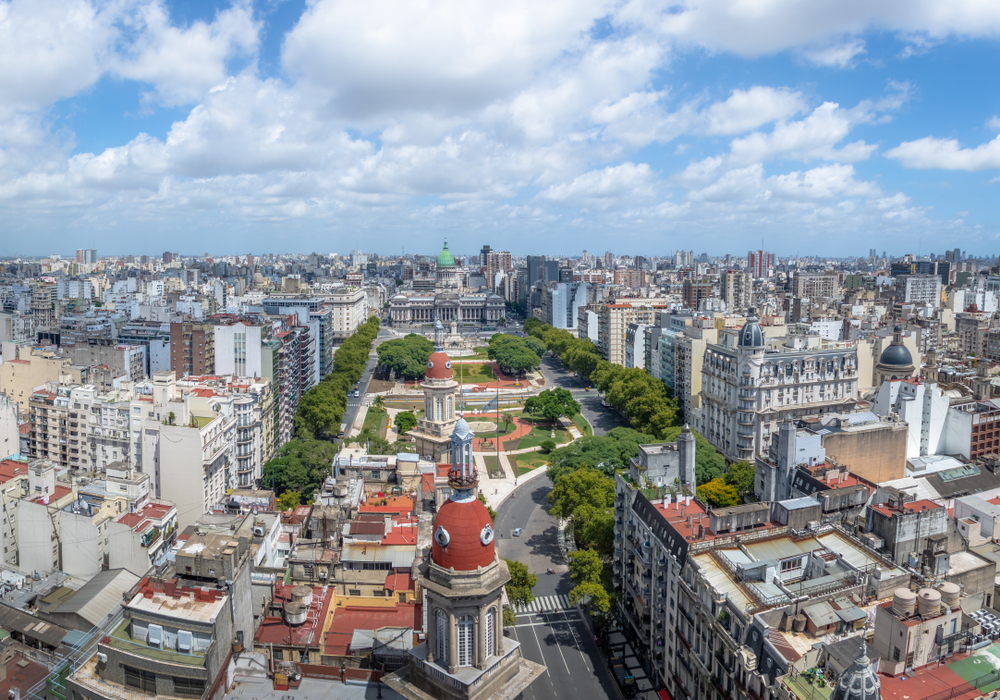
Argentina is the second-largest South American country and the eighth largest in the world, spanning a total area of 2,780,400 sq km.
It shares borders with other large countries including Bolivia, Paraguay, Brazil, and Uruguay. Buenos Aires is the country’s largest city by population with a population of 2,936,877.
Its diverse population makes it a cultural hub, so it’s no surprise to find a variety of ethnic groups, religions, and languages here.
It ranks as the second-largest economy on the continent and thrives in various industries, including natural resource extraction, agriculture, and tourism.
The country maintains a GDP (PPP) of $1.195 trillion, ranking it 28th in the world.
3. Peru – 1,285,216 Square Kilometers
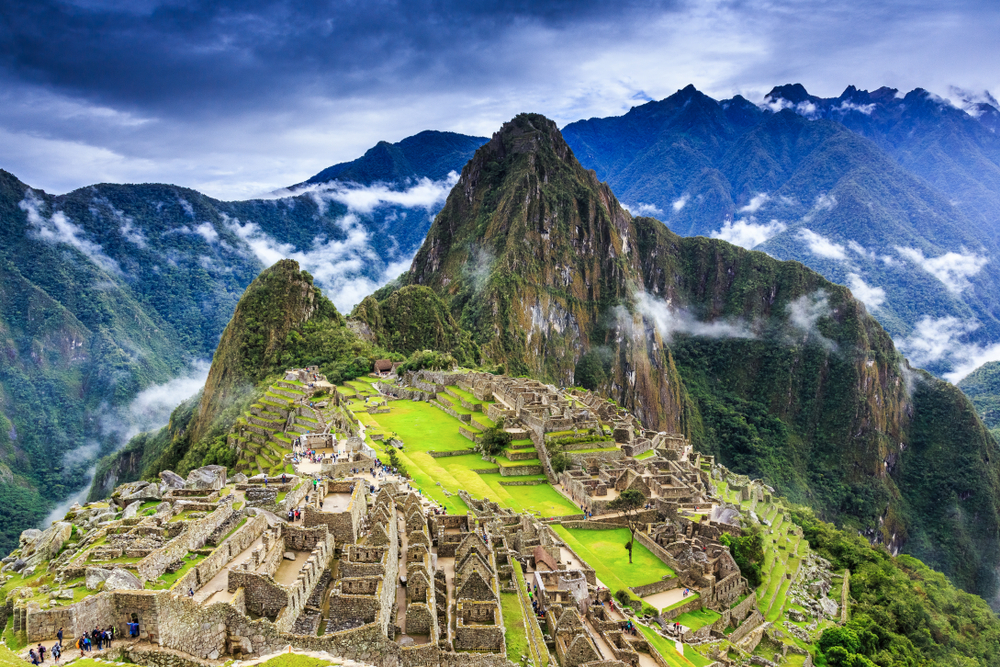
Known for its majestic Machu Picchu and Rainbow Mountains, Peru is the third-largest country by area with a total area of 1,285,216 sq km.
It has a population of 34,294,231 with a population density of 23 per square kilometer. Lima is the country’s capital city and largest city with an area of 2,672.3 sq km and a population of 9,751,717.
The country is home to a famous UNESCO World Heritage Site, the Historic Centre of Lima located in Cercado de Lima.
The key drivers of its economy are related to mining, agriculture, manufacturing, and biotechnology.
It has a diverse demographic composition, comprising Asians, Africans, Europeans, Mestizos, and Amerindians.
4. Colombia – 1,138,910 Square Kilometers
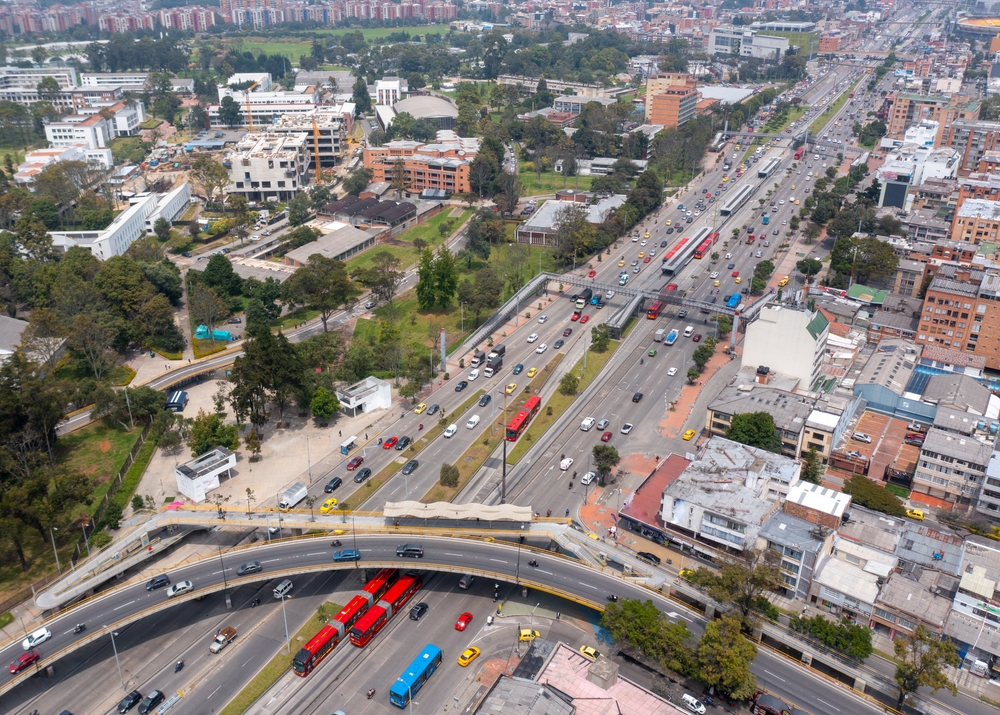
Home to world-famous artists, aromatic coffee, and impressive emeralds, Colombia ranks fourth on the list with a land area of 1,138,910 sq km.
The country is known for many remarkable things, including its 60 national parks, astonishing wildlife, and biodiversity.
Its diverse economy is powered by agricultural products, including avocados, coffee, palm oil, and exotic fruits.
Colombia is also a major exporter of natural resources, most especially emeralds, petroleum, and coal.
Bogotá is its capital district with 8,181,047 residents, a popular city known for its historical charm. The most populated cities in Colombia are Bogotá, Medellin, and Cali.
5. Bolivia – 1,098,581 Square Kilometers
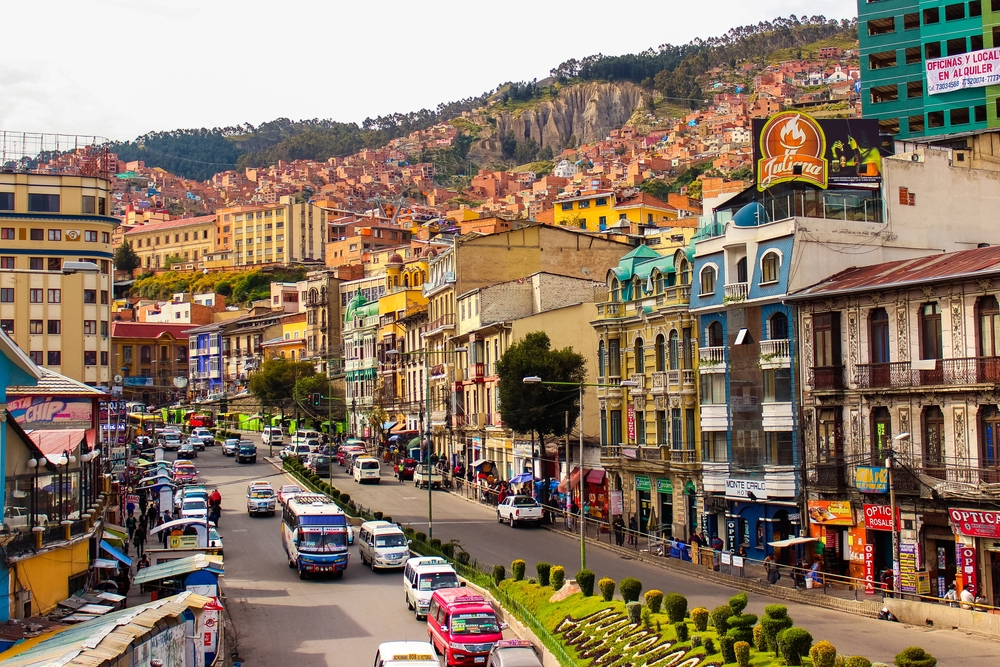
Bolivia is the seventh largest landlocked country in the world and is bordered by Brazil, Paraguay, Argentina, Chile, and Peru.
It has a total area of 1,098,581 sq km, making it the fifth largest in South America and the 27th largest in the world.
Interestingly, the country has more than 30 official languages and is home to many of the world’s highest, including Lake Titicaca the highest navigable lake in the world, and La Paz the highest capital city.
The economy is powered by several major industries including agriculture, mining, and manufacturing.
There are two capital cities: La Paz for executive and legislative and Sucre for constitutional and judicial.
Santa Cruz de la Sierra is its largest city with an urban population of 1,867,673 and a total area of 1,345 sq km.
6. Venezuela – 912,050 Square Kilometers

Venezuela is the 32nd largest country in the world and the sixth largest in South America. It has an area of 912,050 sq km and a water percentage of 3.2%.
The country is bounded by the Caribbean Sea, Colombia, Brazil, Trinidad and Tobago, and Guyana.
The country speaks Spanish and 23 regional languages. Approximately 91% of the population are Christian and 8% have no religion.
Some famous places in the country are Angel Falls, National Pantheon, and Morrocoy National Park.
7. Chile – 756,102 Square Kilometers
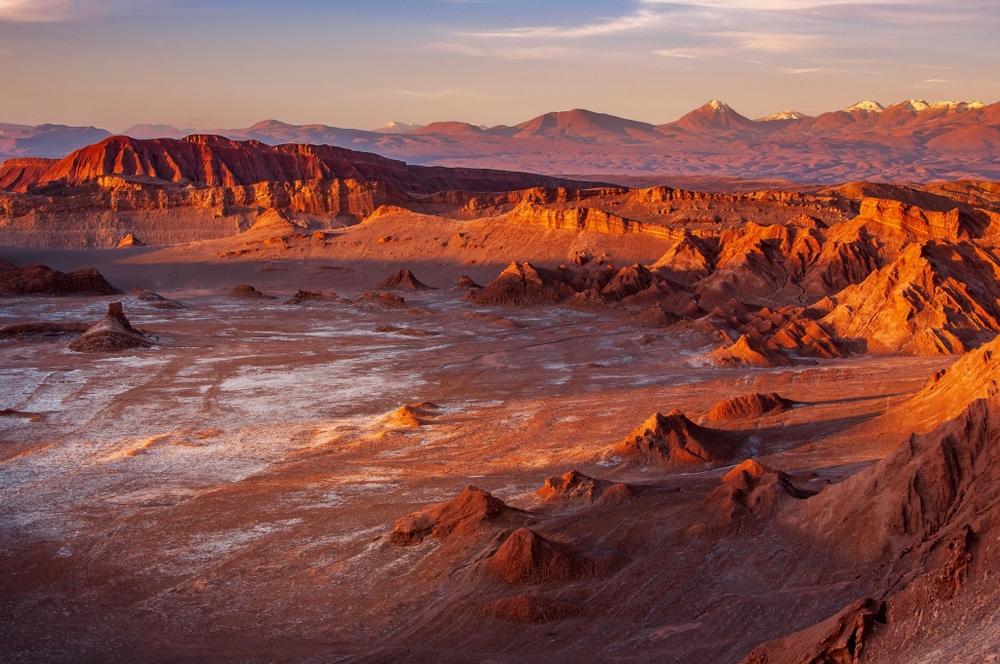
Located in the western region of South America, Chile is the seventh largest country on the continent with an area of 756,102 sq km.
Approximately 21.7% of Chile is covered with forested areas. Aside from forests, you can also find several natural landscapes including the Atacama Desert, beaches, Conguillí National Park, and El Colgante Hanging Glacier.
The most populated cities in Chile are Santiago Metropolis (5,428,590), Greater Valparaiso (803,683), Greater Concepcion (666,381), Greater La Serena (296,253), and Antofagasta (285,255).
The main economic activities involve tourism, forestry, mineral resources, agriculture, and fruit production.
Some of its major fruit exports are grapes, peaches, plums, and hazelnuts.
8. Paraguay – 406,752 Square Kilometers
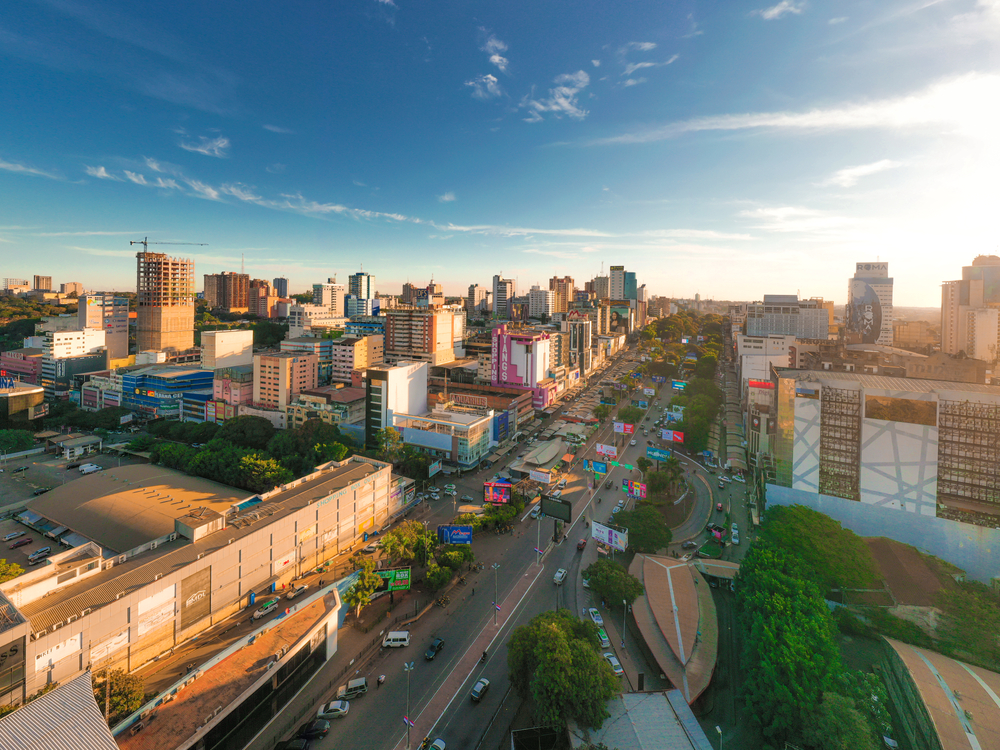
Paraguay ranks the 59th largest country by area and the 104th largest by population in the world.
It has a total area of 406,796 sq km and a population of 7,359,000. This landlocked country shares borders with Argentina, Brazil, and Bolivia.
The land area of the country is divided into the eastern region and the western region. It comprises six ecoregions, namely Alto Paraná Atlantic forests, Cerrado, Humid Chaco, Chaco, Paraná flooded savanna, and Pantanal.
The GDP (PPP) of the country is estimated to be $101.075 billion, making it the 90th largest in the world.
9. Ecuador – 283,561 Square Kilometers

Home to the world’s first UNESCO World Heritage Site, Ecuador is the fourth smallest country in South America with a total area of 283,561 sq km.
The country is a major exporter of bananas and is considered the orchid capital of the world. Its economy is the eighth largest in Latin America and is driven by diverse industries including technology, tourism, and food production.
The capital city and the most populated city in Ecuador is Quito, located in the province of Pichincha.
Quito measures a total metro area of 4,217 sq km with 2,800,388 residents. The city of Quito is listed as a UNESCO World Heritage Site designated in 1978.
10. Guyana – 214,969 Square Kilometers
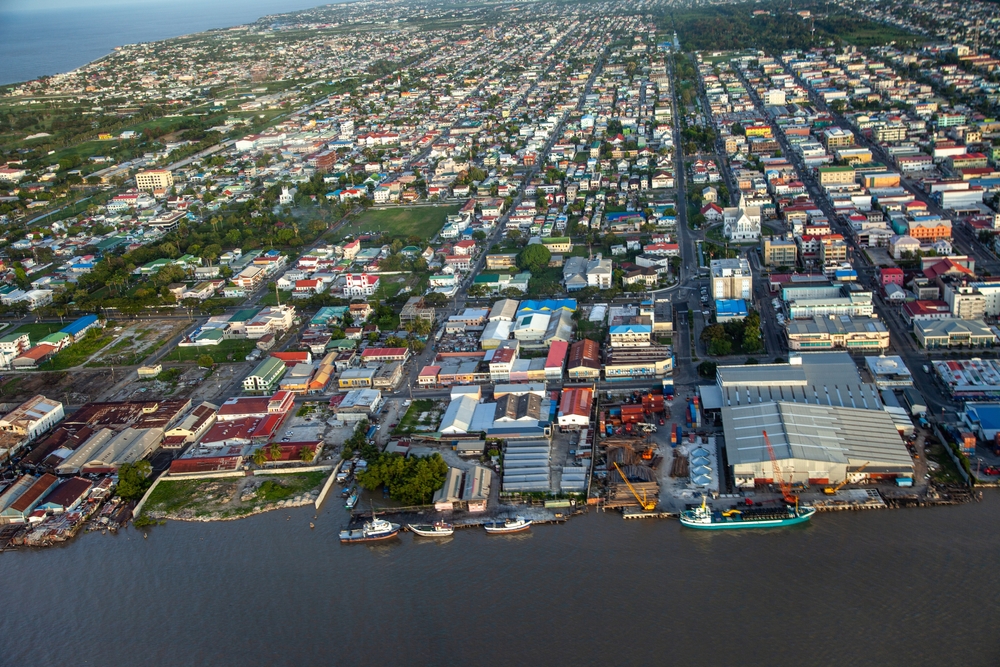
Guyana lies in the northern region of South America, spanning an area of 214,969 sq km. It is bordered by Brazil, Venezuela, Suriname, and the Atlantic Ocean.
There are 10 regions in Guyana: Barima-Waini, Pomeroon-Supenaam, Essequibo Islands-West Demerara, Demerara-Mahaica, Mahaica-Berbice, East Berbice-Corentyne, Cuyuni-Mazaruni, Potaro-Siparuni, Upper Takutu-Upper Essequibo, and Upper Demerara-Berbice.
The country speaks English as the official language, along with 10 indigenous languages. 743,700 people live in Guyana which is composed of diverse groups, including Indians, Africans, Indigenous, Europeans, and Chinese.
Some of its notable landmarks are the historical St. George’s Anglican Cathedral, Demerara Harbor Bridge the fourth-longest in the world, and Berbice Bridge the sixth-longest floating bridge in the world.
11. Uruguay – 176,215 Square Kilometers
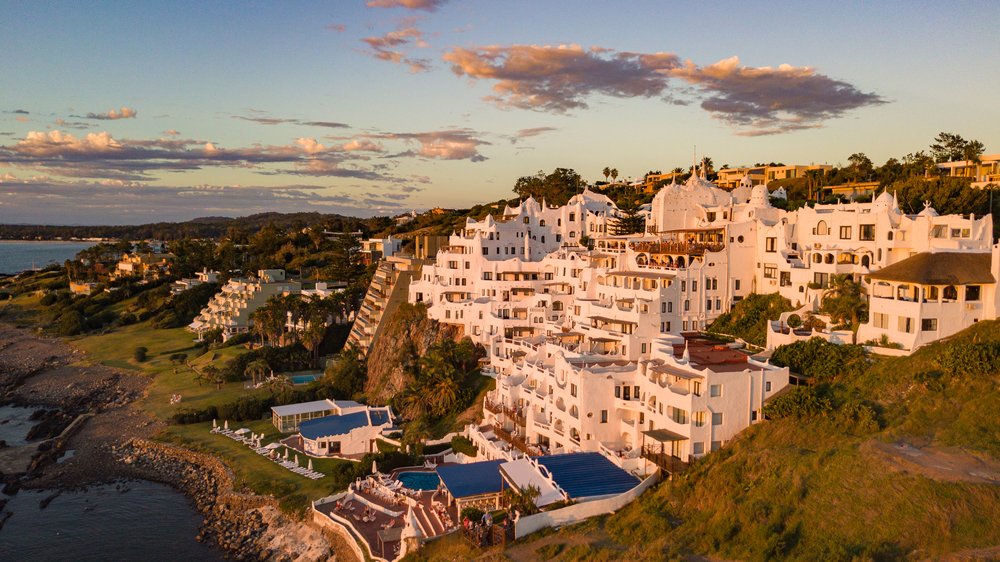
Also known as the Oriental Republic of Uruguay, the country is the second-smallest country in South America with a total area of 176,215 sq km.
It consists of 1.5% water and a population of 3,518,552. The country is bounded by Argentina, Brazil, Río de la Plata, and the Atlantic Ocean.
The land area consists of 39,120 farms and 8.6% are forested areas. The major economic drivers of Uruguay are soy, beeswax, wool, and horse meat production.
Tourism is also a key aspect of its economy, contributing 9% of the GDP.
12. Suriname – 163,820 Square Kilometers
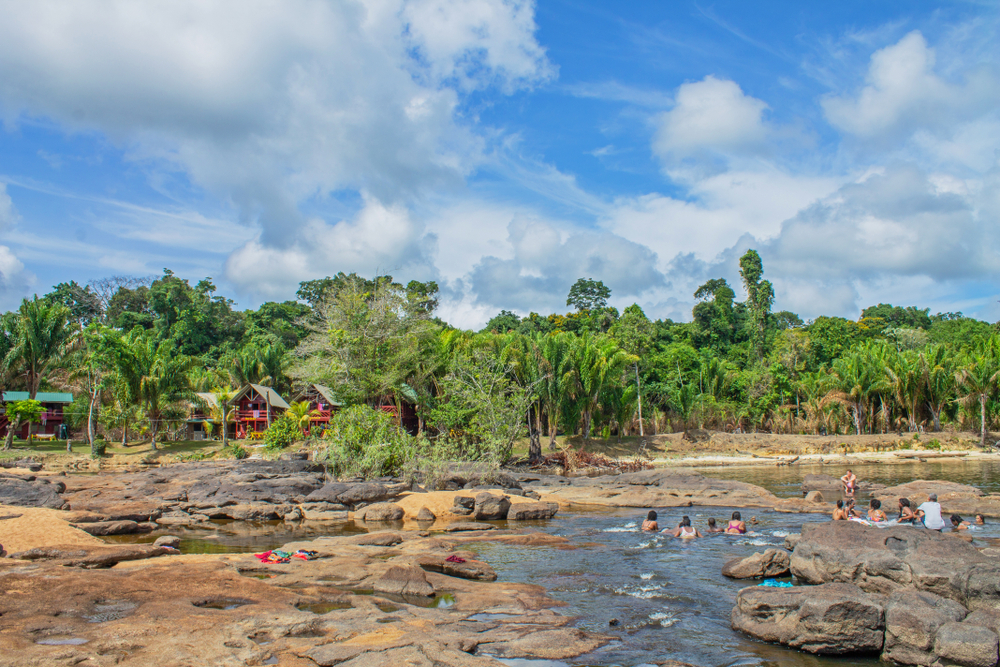
The 12th largest and also the smallest country in South America is the Republic of Suriname, a small country known for its Dutch sugar plantations.
Its official language is Dutch, along with 8 recognized indigenous languages. Some of the ethnic groups included in its population are Indians, Maroon-Bushinengue, Creole, Javanese, Chinese, and Europeans.
The country has a total area of 163,821 sq km with 1.1% water. The land area is made up of tropical rainforests, savannas, and mountain ranges.
It consists of six ecoregions: Guayana Highlands moist forests, Guianan moist forests, Guianan savanna, Guianan mangroves, Paramaribo swamp forests, and Tepuis.
Its population is estimated to have 612,985 residents, ranking it the 171st largest population in the world.


